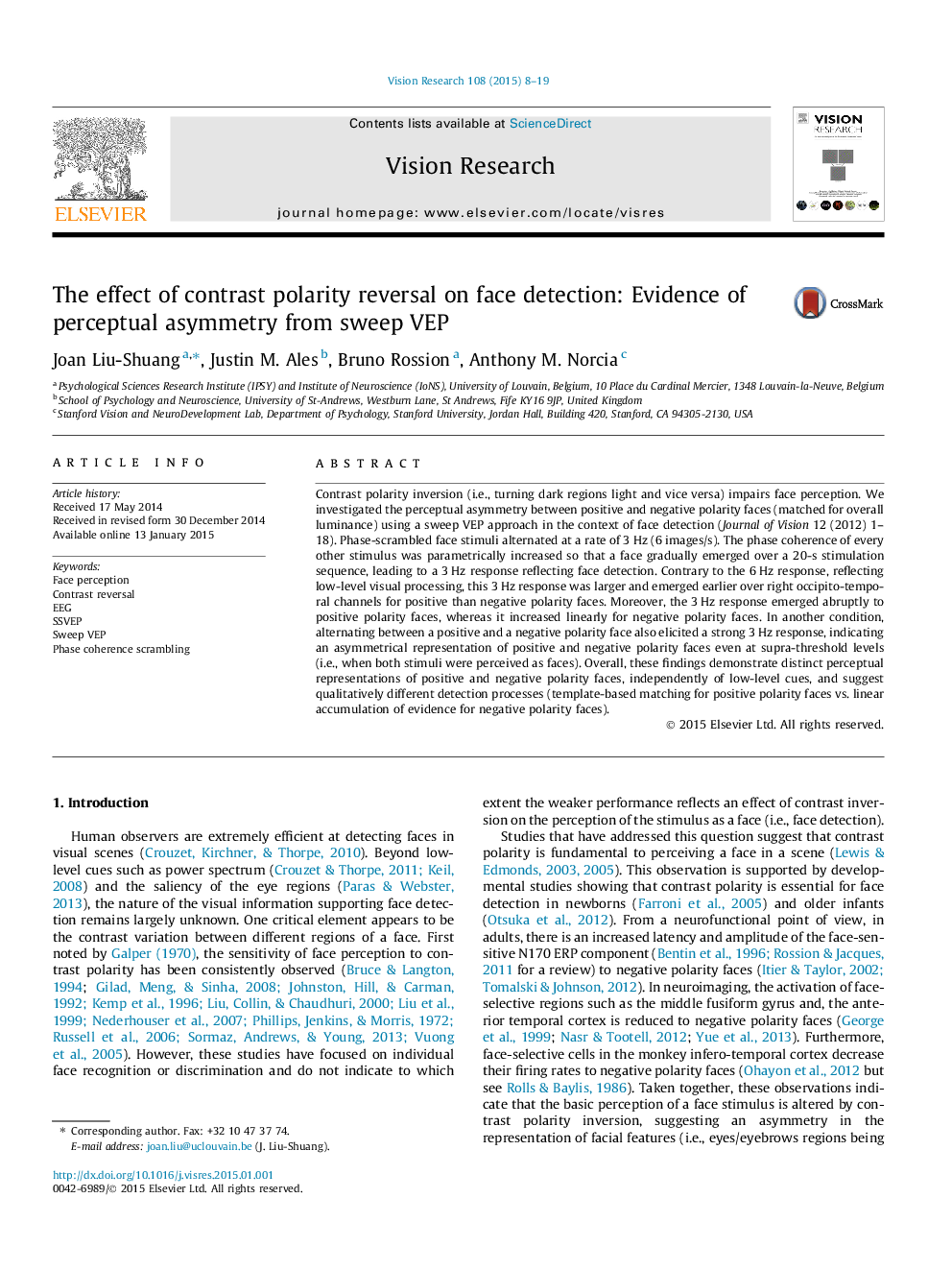| Article ID | Journal | Published Year | Pages | File Type |
|---|---|---|---|---|
| 4033690 | Vision Research | 2015 | 12 Pages |
•Contrast polarity affects face detection responses’ size, profile, and threshold.•Positive vs. negative polarity perceptual asymmetry is independent of visibility.•The data reflect high-level processing as low-level visual features are equalised.
Contrast polarity inversion (i.e., turning dark regions light and vice versa) impairs face perception. We investigated the perceptual asymmetry between positive and negative polarity faces (matched for overall luminance) using a sweep VEP approach in the context of face detection (Journal of Vision 12 (2012) 1–18). Phase-scrambled face stimuli alternated at a rate of 3 Hz (6 images/s). The phase coherence of every other stimulus was parametrically increased so that a face gradually emerged over a 20-s stimulation sequence, leading to a 3 Hz response reflecting face detection. Contrary to the 6 Hz response, reflecting low-level visual processing, this 3 Hz response was larger and emerged earlier over right occipito-temporal channels for positive than negative polarity faces. Moreover, the 3 Hz response emerged abruptly to positive polarity faces, whereas it increased linearly for negative polarity faces. In another condition, alternating between a positive and a negative polarity face also elicited a strong 3 Hz response, indicating an asymmetrical representation of positive and negative polarity faces even at supra-threshold levels (i.e., when both stimuli were perceived as faces). Overall, these findings demonstrate distinct perceptual representations of positive and negative polarity faces, independently of low-level cues, and suggest qualitatively different detection processes (template-based matching for positive polarity faces vs. linear accumulation of evidence for negative polarity faces).
